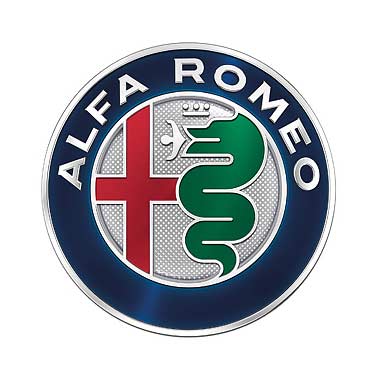
Alfa RZ Beauty or the beast? Let loose on the Isle of Man. Alfa-Romeo RZ. Is it a beauty, or a beast? Sun shining and top down, Richard Heseltine’s bound for the Isle of Man to discover the true nature of the beast. Enchanting or ugly, captivating or excruciating, the Alfa Romeo RZ always splits opinion. But try one, and you’ll fall madly in love… Words Richard Hesletine. Photography Lyndon McNeil.
Alfa’s convertible that seemed to go from concept to road car without alteration.
It parts traffic like a snowplough, which could be down to the thuggish visuals but more likely the eye-popping yellow hue. Nothing else looks remotely like an Alfa-Romeo RZ, save for the 1989 Alfa-Romeo SZ that bore it. Even now, a quarter of a century since this cartoonish ragtop first broke cover, it hasn’t lost the power to shock. To some arbiters of beauty, it’s hard to look at, to others it’s hard to look away. Nothing about this car is in the realms of what you might call normal, but to drive it’s everything a great Alfa Romeo should be and more. Don’t believe us? Join us as we head to the Isle of Man, an island of legends about monsters, to prove Il Mostro’s topless cousin is just as scintillating.

On the coastal roads of the Isle of Man, it’s utterly sublime. It assaults your senses when pressing on, but soothes them when all you want to do is potter. It feels so, well, immersive, its dynamic behaviour being so much better than preconception might have you believe, while its 3.0-litre V6 is beyond choral. It gives your emotions a workout, that’s for sure. There’s method to the madness here, but it might just as easily be the other way around.
That said, as wonderful as the model is – and it is truly wonderful – somehow you cannot help but feel that it was never quite finished. This is understandable considering the timeframe in which it was created. Shortly after Alfa Romeo was swallowed whole by Fiat in 1987, there was a very real sense that the once-proud marque’s sporting credentials were in danger of being lost for good. The Formula One comeback that began the previous decade had come up short and it was left to sporadic touring car success to keep the name within shouting distance of the premium brands. Not that there was anything especially premium about Arese road cars in the 1980s: this was the decade that bought us the Nissan Cherry-derived Arna, let’s not forget. A ‘halo’ car was needed to bolster the brand’s flagging reputation, and fast. There was, however, a slight problem in that there wasn’t much in the way of a budget. As such, a degree of parts-bin thievery was called for.
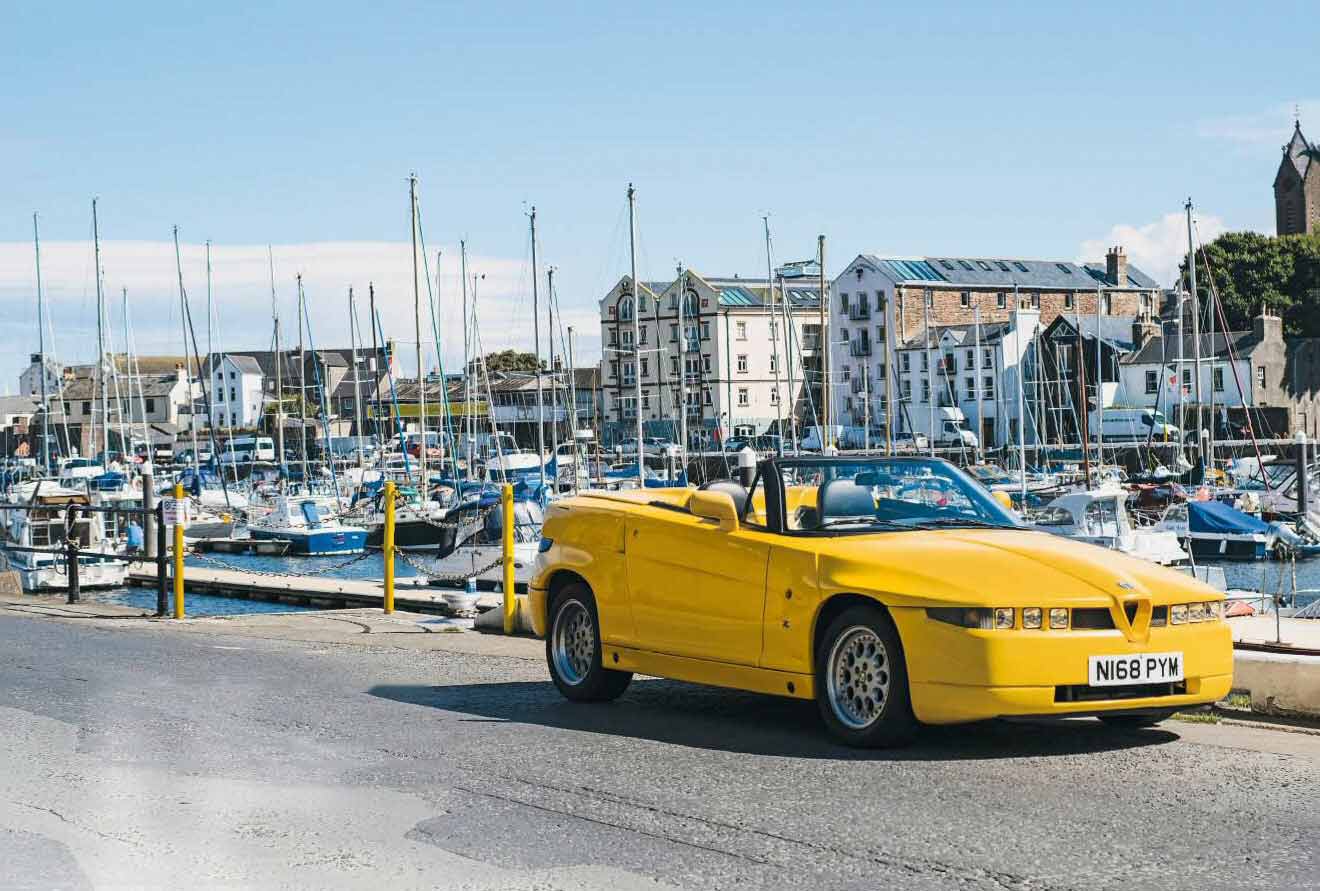
A new-car programme, from concept to market, usually takes around four years. Project ES30 (Experimental Sportscar/3.0-litre) went from artwork to show time in just 19 months with styling, research and development and Alfa Corse departments all working closely with outside coachbuilder Zagato during the prototype stages and coordination of manufacture. Much of the running gear was robbed from the fun but flawed 75 saloon, or rather the competition variant that had been campaigned Stateside and in the World Touring Car Championship.
The bodyshell featured methacrylic resin panels over a steel framework, this composite material being developed by Carplast specifically for the SZ. The panel fit may have appeared haphazard, with odd shut lines and panel gaps, but the outline was honed in Fiat’s wind tunnel until it had a drag coefficient of just 0.30cd. By way of a comparison, a Ford Sierra’s was 0.34cd. What’s more, it wasn’t rushed to market before a handling polish. Giorgio Pianta took time off from developing Lancia’s rally weaponry to refine the SZ’s handling. Prototypes purportedly recorded 1.4G cornering loads.
Predictably, the SZ caused a furore when it broke cover at the ’1989 Geneva Motor Show. Alfa Romeo succeeded in bringing the name back into the limelight. Here was a pure styling statement, the ‘bovver boot’ outline dividing opinion like no other. Many onlookers hated the Robert Opron/ Antonio Castellana co-production. The motoring media went for the jugular, proffering the sort of invective more recently meted out to BMW’s whipping boy, Chris Bangle. The rest of us loved it because the nickname Il Mostro was perfectly apt. It was monstrous, but in the best way possible. Here was a Frankensteinian mash-up that defied belief as much as description and was genuinely interesting. It was a perfect retort to the smoothed-over amorphous look that had been prevalent in the 1980s.
Of course, the SZ never made much of a dent in Alfa’s sales chart. Not even close. Just 1036 were built in any colour you liked so long as it was red with a grey roof, 38 of them prototypes. Of those allocated to the UK, most went to speculators who then got burned once the investor boom imploded. Prices are only now starting to match the original £45k asking price.
Nevertheless, Alfa Romeo followed it up in 1992 with the release of an open-top sibling. However, the new Roadster Zagato wasn’t merely an SZ denuded of its roof. While mechanically unchanged for the most part, the bodyshell was so different only the front wings and boot lid were carried over. Up front, the bonnet no longer featured slatted ducts, the trailing edge being kicked up to shield the windscreen wipers. The chin spoiler was shallower, giving 30mm more ground clearance, while the side skirts were reshaped. The side windows were also more rounded to follow the curvature of the windscreen more closely than on the SZ. The stubbier windscreen was 50mm lower than that of its predecessor, while a twin-humped rear deck echoed Zagato’s trademark doublebubble roof styling, under which was stored a simple, manually erected hood.
Plans initially called for 350 RZs to be made, but Zagato produced only 242 before lurching into receivership. A further 32 cars were constructed by the receivers to 1994, the famous styling house rebounding in time but, tellingly, it hasn’t made another car in volume since. Even now, a sense of nearly-but-not-quite trails the RZ. That, and the lingering spectre of what further variations of theme might have followed had fate been kinder. However, even if you’re not smitten by the freakish exterior, you cannot help but be impressed by the way it drives.
From a few feet away, the RZ appears to still be in the throes of creation. There’s something demonic about the bank of lights that flank the corporate Alfa grille. You half expect them to glow red. In photos, it looks somewhat geometric and slab of side, but that isn’t the case up close.
There are curves here, it’s just that it takes repeat viewings to appreciate them. It is clearly wedge-shaped, and not of its time – or any time come to think of it, but there are no straight lines. Not one.
The first thing that strikes you once inside is how comfortable the seats are. That, and how low-down you sit with the lofty beltline at shoulder level. The RZ is more luxurious than the car that bore it, and overtly designer-led with it. From the white instruments set in an anthracite-grey panel, to the leather facia and centre console that runs the length of the cabin, it looks and feels every inch the Italian exotic. It’s practical, too, all things being relative, a fold-down panel between the seats allowing access to the luggage area.
You don’t feel pinched for space, but fit and finish falls a little short of its period rivals, if only the German ones. There are few ergonomic quirks, though, the chunky top rail – which doubles-up as a roll-over bar – interrupts your line of vision if you’re of even average height. You end up stooping below it or peering over it, which grates.
Powered by the proven all-alloy V6 shared with the GTV6, 75 and umpteen other classic Alfas, the RZ soundtrack is of the enchanting variety. There’s a fruity backbeat which sounds all the better in a convertible. That said, it isn’t loud unless you’re piling on the revs, which is no great hardship. It also has an extra 100kg to haul around relative to the SZ, so performance is rapid rather than blisteringly quick. It doesn’t feel as fast as Alfa’s period claim of 0-60mph in 7sec on its way to a top speed of 143mph, despite packing 210bhp.
Nevertheless, there is joy to be reaped once the roads get twisty. In traditional Alfa manner, there’s a transaxle, here borrowed from the 75 but with shorter gear ratios. The advantage of this set-up is to encourage optimal distribution of the car’s 1356kg (2989lb) kerb weight. Also in keeping is the rear suspension, a De Dion tube connecting the rear hubs, longitudinally located by twin converging trailing arms and laterally by a Watt’s linkage. With lessons learned from tin-top racing, there are uniball joints in place of rubber bushes, coil springs and an anti-roll bar adding stiffness with just a little negative camber for optimal grip. Up front, there are double wishbones with coils in place of the regular 75 torsion bars.
Ride quality is uncompromising but there is endless joy to be had playing with the cockpit-adjustable dampers: at its lowest setting, there’s negligible lift front and rear. And the rack-and-pinion steering is just as accomplished. It initially feels low-geared but this is an illusion. There is plenty of feedback and no more assistance than you absolutely need. For what is essentially a reworked 75 saloon, there is something alchemical about this car. It’s so much more than the sum of its parts.
Modern Classics view
This is a car that will always polarise opinion. There are some Alfa types who claim that the open-top car lacks the scalpel-sharp precision of the coupé and there is a scintilla of truth in that. It doesn’t feel quite as urgent, not quite as poised, but there isn’t much in it. The RZ is still mighty. No other Alfa Romeo that has emerged over the past quarter of a century has come close to matching it for entertainment value, the 4C among them.
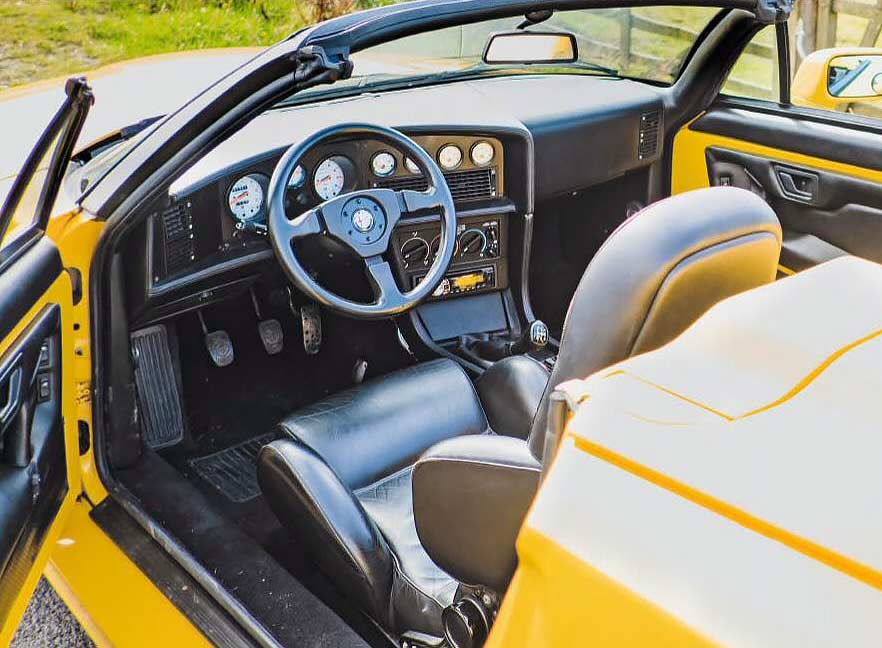
There are no shades of grey here, more hues of yellow, red and black which were the only colours ever officially offered in period. The RZ is an acquired taste, but one well worth acquiring should you be able to stump up the requisite £40k.
Should you be able to find one, that is, as only a small number of privately-imported cars ever made it to Blighty. Yes, it is made of a material that repels paint, microblisters being a common problem, and yes, it is difficult to see out of it with the hood up, but it’s great fun to drive and rare. That outstrips rank ordinariness any day.
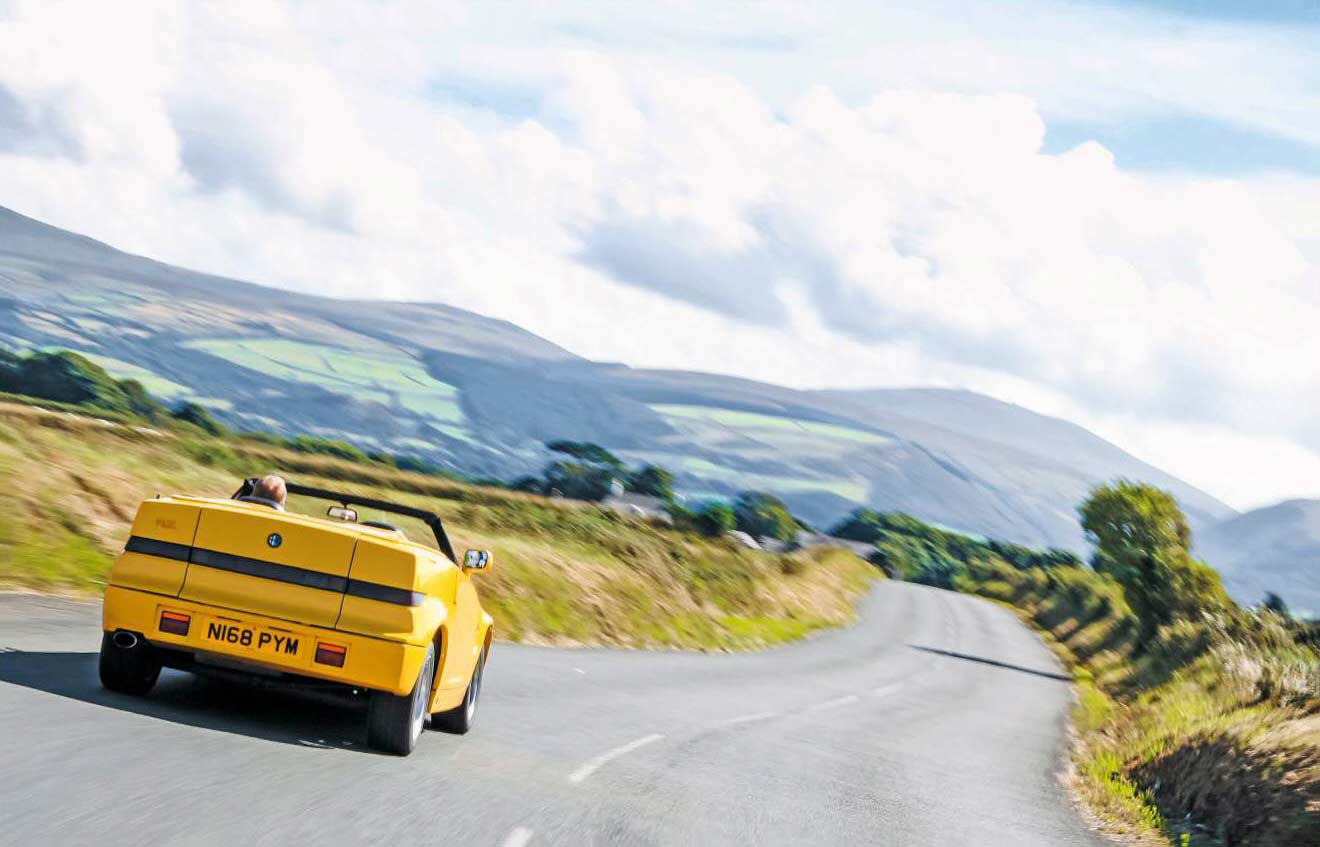
THANKS TO Darren Cunningham / isleofmanmotormuseum.com
‘WE ARE STILL TALKING ABOUT IL MOSTRO. SAYS IT ALL REALLY’
The 1970s weren’t kind to Zagato, the firm only surviving by making everything from truck cabs to motorcycle helmets. The 1980s were also a rollercoaster ride, with subcontracting gigs keeping the firm afloat. ‘I am the third generation [principal],’ Andrea Zagato says. ‘I joined the business after my graduation from Bocconi University in Milan. Back then, in the mid-1980s, we had renewed our relationship with Aston Martin. We also had the contract to make the Maserati Biturbo convertible, but it was still a time of uncertainty. When we took on making the RZ and SZ, I was already looking for a way out of building cars in large numbers and returning Zagato to its roots as a design centre.

‘I am glad that people still like the SZ and RZ, but I do not look back happily on the period. The problem was, you had marketing men telling us how to design cars. Also, if someone decided to raise a car’s price, demand would drop and you had to get rid of workers because there wasn’t enough work. You also had to pay for the investment in production lines. As for whether I like the looks, I don’t know what to say other than we are still talking about them. That says it all really.’
Facts and photos
29 UK cars left
WHAT TO PAY
Concours £60,000
Good £40,000
Usable £35,000
Project £30,000
‘SO MUCH BETTER THAN PRECONCEPTION MIGHT HAVE YOU BELIEVE’
‘FROM A FEW FEET AWAY, THE RZ APPEARS TO STILL BE IN THE THROES OF CREATION’
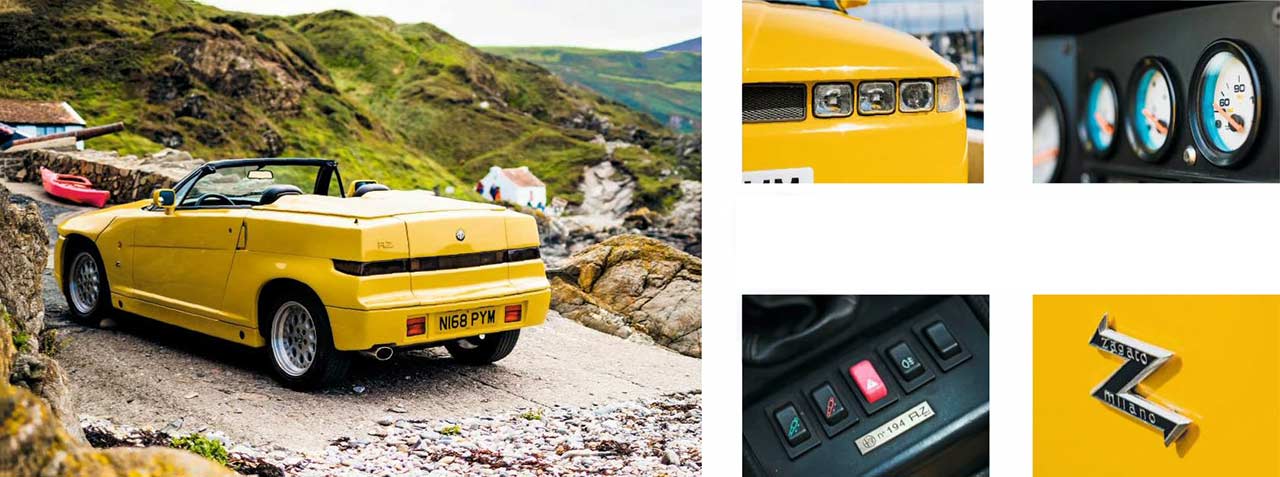
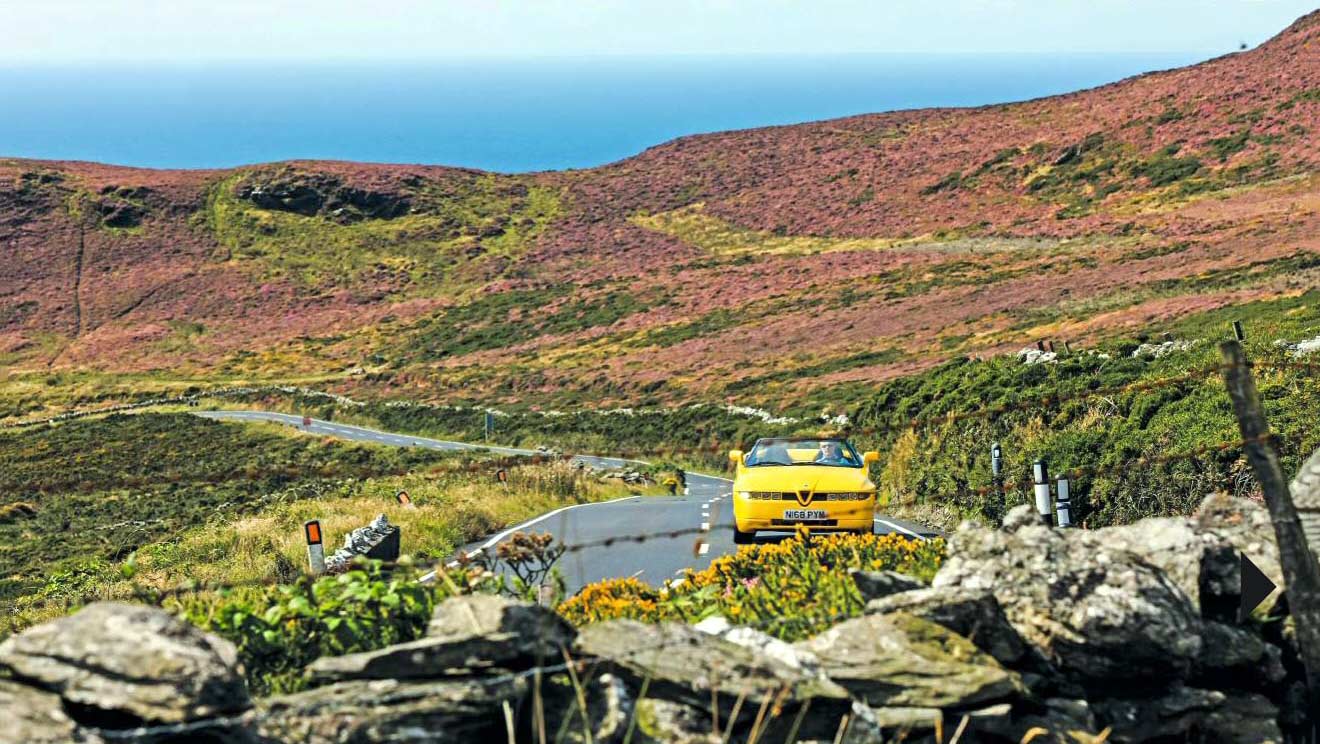
TECHNICAL DATA FILE SPECIFICATIONS ALFA ROMEO RZ
Engine 2959cc, 6-cyl, SOHC
Transmission RWD, 5-speed manual
Power 210bhp @ 6200rpm / DIN
Torque 181lb-ft @ 4500rpm / DIN
Weight 1356kg
PERFORMANCE
0-60mph 7sec
Top speed 143mph
Economy 30mpg

